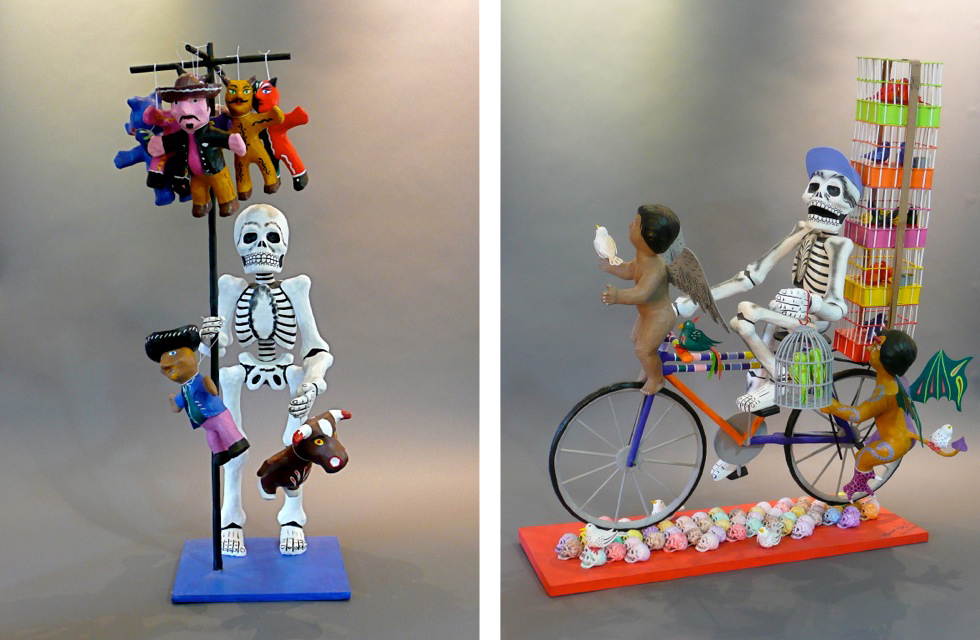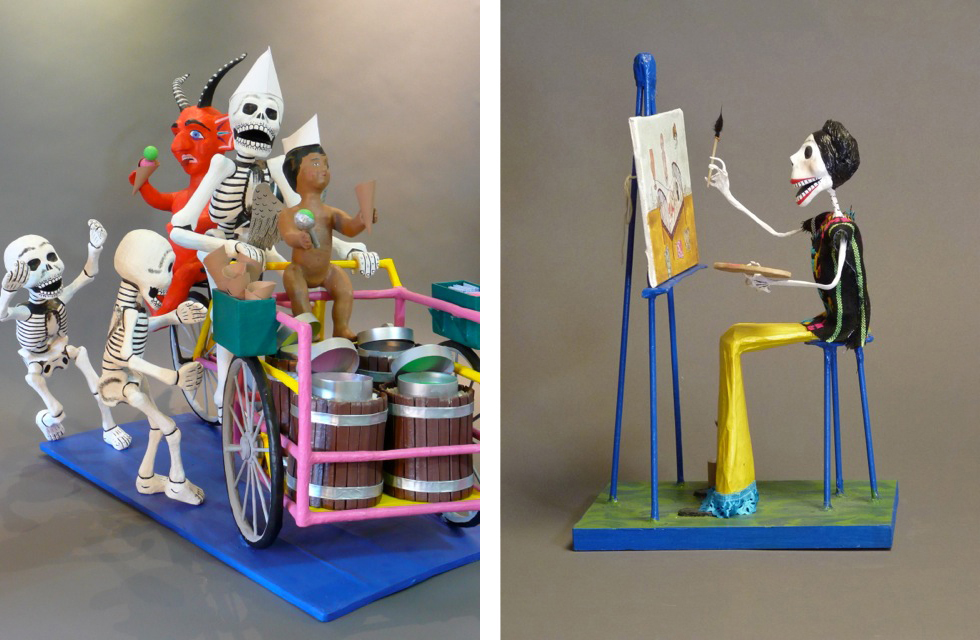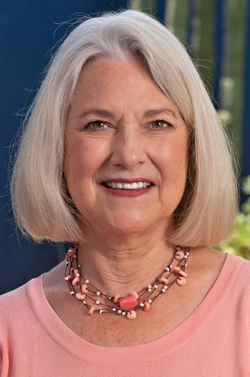
Oct. 23, 2022
by Susan Page
Skulls and skeletons appear with great frequency in Mexican folk art, especially around the annual Day of the Dead holiday. The reason for this reaches far back into Mexican history.
More than 500 years ago, when the Spanish conquistadors landed in what is now Mexico, they encountered indigenous communities practicing a ritual that seemed to mock death. The Aztecs kept skulls as trophies, displayed them on walls and in temples, and used them during rituals to symbolize death and rebirth. The skulls honored the dead, whom the Aztecs and other Meso-American civilizations believed came back to visit during an annual ritual. Unlike the Spaniards, who viewed death as the end of life, the Aztecs viewed it as the continuation of life. Instead of fearing death, they embraced it.
The newly arrived Spaniards considered the ritual using skulls to be barbaric and pagan, and tried to eradicate it. But when, like the Aztec ancestors themselves, the ritual would not die, the Spaniards simply incorporated it into Christianity, or perhaps more likely, the Aztecs brought it with them when they were converted. The closest the Catholics could come to a similar holiday was All Saints' Day and All Souls' Day, and gradually, the two traditions merged.
In about 1910, the cartoon illustrator José Guadalupe Posada created the skeleton "Catrina," to make fun of wealthy Mexicans who thought the only worthwhile style was that of European aristocrats. That cartoon became an icon and gave rise to more skeletons in all folk art mediums.

Duality: The yin/yang of Mexico
The skulls and skeletons used in Day of the Dead altars and seen widely in Mexican folk art are not about death but rather about the duality of life and death, a statement that death is an integral part of life. Because the skeletons are never dead! They are riding bicycles, selling their wares, taking a shower, dancing, getting married, feeding their children, and generally enjoying life. They accept death and even make fun of it. Some say they are laughing at the hubris of the living, who are foolish, fearful, and unappreciative of life! "You who are living," they seem to say, "are rejecting the joy of life. You are not embracing each other enough! Watch us!"
So when you see a skeleton or skull in a piece of folk art, realize that you are viewing a powerful symbol, rife with meaning, and participating in a tradition that dates back 3,000 years or more. The duality of life and death that they represent is like the yin/yang of Mexican culture.

Day of the Dead Altars
Mexicans believe it is critically important to keep the memory of loved ones alive by creating altars that honor them. There are three deaths, they believe: the first death occurs when you stop breathing and physically die. The second death occurs when you are buried or cremated. And the third death occurs when no one living remembers that you existed. That is why the Day of the Dead altars are so important. By remembering and honoring your loved ones, you prevent that third death.
*****
 To celebrate the many folk art traditions related to Day of the Dead
To celebrate the many folk art traditions related to Day of the Dead
Galeria Atotonilco will hold an Open House
Saturday and Sunday, October 29 and 30
from noon to 5 PM both days
The public is invited.
Free
Directions:
type "Galeria Atotonilco" into your GPS
We are five miles north of town.
415-185-2225
Gáleria Atotonilco
**************

Susan Page Is the Former Director of Women's Programs at UC Berkeley, where she helped to found the Contraception Clinic at the Student Health Service, and to create one of the first university-based Human Sexuality programs in the U.S. She helped establish the first safe house for battered women in Contra Costa County. A best-selling author, Susan has appeared widely on national television and radio, including the Oprah Winfrey Show. She founded and is Director of the San Miguel Writers' Conference and Literary Festival and of Gáleria Atotonilco.
www.susanpage.com
**************
*****
Discover Lokkal:
Watch the two-minute video below.
Then scroll down a little farther to see SMA's Community Wall.
Intro / Mission

Visit SMA's Social Network
